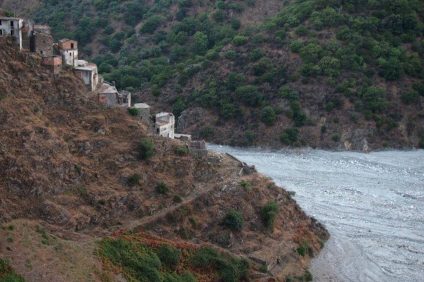Palmanova is a village in the province of Udine, located 27 meters above sea level with 5419 inhabitants. It is a real urban treasure. A fortress city built by the Republic of Venice. The result of an elaborate project developed by a group of engineers and treatises working at the Fortifications Office under the guidance of Giulio Savorgnan.
The objective of Venice was very clear, to create the new royal fortress in the center of the Friuli plain, so as to be able to strengthen the defenses on the territory against the incursions of the Turks and the advance of the Habsburgs. An example of a "modern" fortification from the late Renaissance period. Considering the importance of this project, we have a lot of information related to the foundation of Palmanova, founded on 7 October 1593. Not an occasional date. This is the anniversary of the victory of Lepanto over the Turks in 1571 by the Holy League.
When talking about this fortress city, one cannot help but underline that it is a masterpiece of Venetian military architecture. Its plan is a star, consisting of two defensive orders with bulwarks and ravelins and the third with lunettes added later by Napoleon, at the end of the nineteenth century. All with the spectacular Piazza d'Armi in the center. In 1960 it was declared a National Monument and in 2017 it became part of the UNESCO World Heritage.
Palmanova history
Palmanova is one of the most fascinating fortified cities in Italy. The 9-pointed star polygonal plan is, as mentioned, a key element of military design. It was impenetrable for nearly two centuries. In 1797 it was reconquered by the Austrians, and then quickly came under the control of the French. It was in this phase that the third circle of fortifications was built with the Napoleonic lunettes. Following the treaty of Campoformio, the fortress returned to the Austrians and was later annexed to the Kingdom of Italy.
Different rulers have alternated in Palmanova and in three centuries of history have shaped the architecture of this incredible place. To rediscover the long and rich history of this fortress city, there is no better place than the Military History Museum. This is based on the dungeon of Porta Cividale and contains relics, documents, uniforms and everything that can best tell the four periods of the city's history (Venetian, Napoleonic, Austrian and Italian), from 1593 to the Second World War.
Palmanova: what to see
If it is true that the Military History Museum is to be discovered at any cost, outside it there is a world to know. Let's start with the ancient fortifications placed to defend the village, enriched by ramparts, powder cases and loggias An open-air museum, in practice. During your tour you will find yourself in Piazza Grande, which boasts a hexagonal shape and houses the most important buildings of the city, including the Duomo, which is the best example of Venetian architecture in Friuli.
There is also space for the Loggia dei Mercanti, as well as the Palazzo del Provveditore Generale, which houses the Town Hall., And the Palazzo del Governatore alle Armi. There are three doors in perfect condition and Porta Udine is the one that keeps the wheels of the drawbridge in its hinges.





